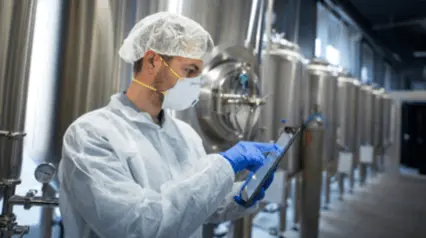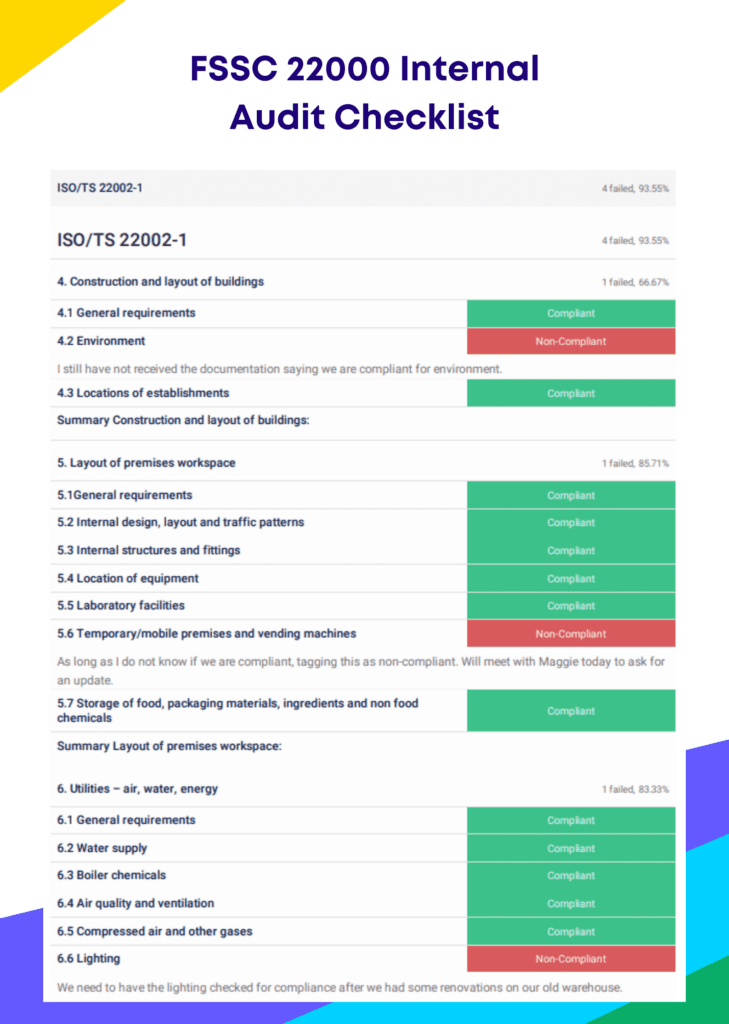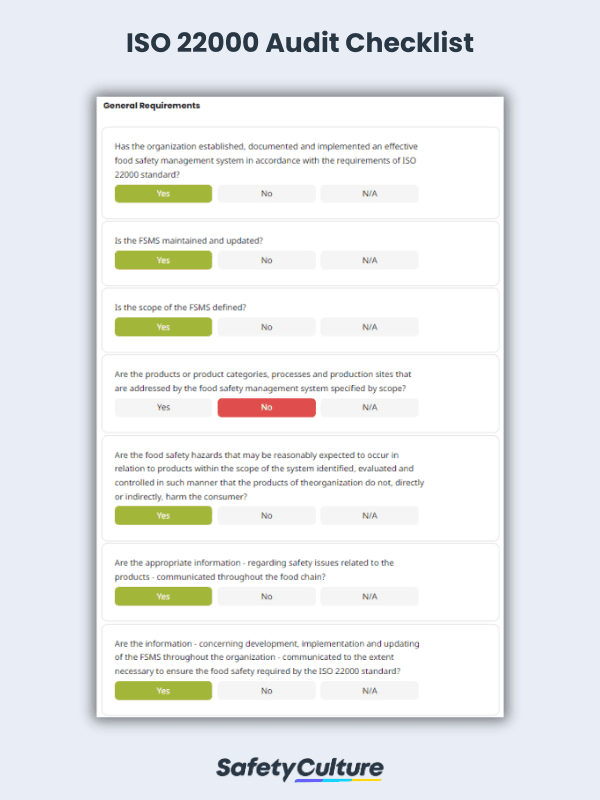What is FSSC 22000?
FSSC 22000 or Food Safety Systems Certification 22000 is an internationally recognized certification scheme that builds upon the ISO 22000 standard in setting a benchmark for quality, safety, and processes for the food industry.
Getting certified for FSSC 22000 demonstrates that a business involved in food products, whether as a manufacturer, supplier, or retailer, has an effective food safety management system in place to meet the requirements of regulators, partners, and consumers.
Benefits of FSSC 22000 Certification for Your Business
FSSC 22000 is designed for food retailers, suppliers, and manufacturers throughout the supply chain. This can include those that process or manufacture animal products, perishable products, long shelf-life products, food ingredients, and even food packaging materials.
Here are some key benefits of adopting the FSSC 22000 scheme per type of business in the food industry:
Suppliers
Many large food retailers require suppliers to have a GFSI certified scheme like FSSC 22000. GFSI, or the Global Food Safety Initiative, is a global organization that sets food safety standards and is backed by a coalition of the world’s largest food retailers and suppliers.
Manufacturers
FSSC 22000 is widely adopted throughout the supply chain and is aligned to the GFSI‘s message of “once certified, recognized everywhere.” As such, manufacturers who get certified for FSSC 22000 can expect the quality of their output to, at the very least, align with that of peers in the business.
Retailers
Food retailers can benefit from the framework approach of FSSC 22000 which can help businesses, regardless of size, implement a food safety management system that would work best for them while meeting the requirements expected by business partners.
Another benefit of FSSC 22000 is that it details how to implement an effective HACCP system. HACCP or Hazard Assessment Critical Control Point, in a nutshell, is the process of proactively identifying which points in food production are prone to hazards that, if left unmitigated, may render a food product unfit for the intended consumer.
Another benefit of FSSC 22000 certification is that those organizations that are already ISO 22000 certified will find it easier to adopt FSSC 22000.
What is the Difference Between ISO 22000 and FSSC 22000?
The “22000” in FSSC 22000 would probably remind one of ISO 22000 and, both being food safety systems, would make one wonder how they may be related or if there’s a difference between them.
ISO 22000
The global standard ISO 22000 is the foundation of FSSC 22000 for its Food Safety Management System (FSMS). Setting a benchmark for food quality, safety, and processes across the world, ISO 22000 combines the core of ISO 9001 and the principles of HACCP to help ensure food safety for the global supply chain.
FSSC 22000
As already mentioned, the FSSC 22000 scheme builds upon the ISO 22000 standard’s FSMS in creating a framework for processes. FSSC 22000 adds value to the standard by including other required components that promote the recognized level of quality and safety for products in the global food industry.
What are the 3 Components of FSSC 22000?
The FSSC 22000 requirements for certification can be divided into these 3 components:
- ISO 22000
The ISO 22000 standard provides the base FSMS but on its own is not enough to be recognized by the GFSI which is why two other components are required for FSSC 22000. - PRP or Prerequisite Programmes
This is based on ISO/TS 22002-1 which is about the requirements for the business’ building layout and construction, maintenance services, product information, hygiene of its personnel, food fraud and defence systems, among others. - FSSC 22000 Additional Requirements
The additional requirements include compliance with regulations, management of food safety staff, as well as record and review of management services such as utilities, transport, and maintenance.
Improve your GRC management
Simplify risk management and compliance with our centralized platform, designed to integrate and automate processes for optimal governance.
Explore nowHow to Get Certified for FSSC 22000 in 5 Steps
Step 1: Choose the Food Safety Standard
Determine first if your business really needs to get certified for FSSC 22000 and if it is going to be advantageous to do so. There are international standards for food safety like the already mentioned ISO 22000 and others like the BRC Global Standard for Food Safety that is also internationally recognized. You can check if your (potential) business partners require any of them and this can help determine which among the selection of food safety standards.
Step 2: Create a Dedicated Team
Create a team composed of individuals from different departments who are familiar with the multiple processes in your operations. They are going to be crucial in determining what changes need to be made and how they should be implemented in order to be compliant with the requirements of FSSC 22000.
Step 3: Review FSSC and its Requirements
In order for the team to know what changes should be implemented, they need to learn about the FSSC 22000 certification scheme. Have the team become familiar with the 3 main components of the certification scheme and how they apply to the business.
Step 4: Prepare your Business
Prepare the business and your employees for the certification by conducting internal audits to determine gaps between the existing processes and the requirements of the certification. Using your own FSSC internal audit checklist can help address process gaps in preparation for certification. Providing refresher training about food safety can also help employees get on board with the preparations for certification.
Step 5: Certification
Search for and get in touch with a recognized third-party certification body that will conduct the process of certifying your business for FSSC 22000.
Create your own FSSC 22000 Audit Template
Build from scratch or choose from our collection of free, ready-to-download, and customizable templates.
Browse FSSC 22000 Audit TemplatesFSSC 22000 Internal Audit Example
As mentioned above, conducting internal FSSC 22000 audits can prepare your business for certification. Identify gaps between your processes and the requirements for certification. Below are examples of a completed FSSC 22000 internal audit to serve as a guide/reference. The templates below are downloadable and customizable, you may download them in either digital or pdf format.
Use SafetyCulture (formerly iAuditor) to Prepare for and Maintain Certification
The process for getting FSSC 22000 certification can be long and tedious which is why using a digital platform like SafetyCulture that’s already been proven to promote safety and quality can help make preparations for the certification process more efficient.
Once certified, ongoing compliance needs to be maintained and proof should be provided. Automated digital recordkeeping of reports organized in cloud storage can help with this.
Instances of noncompliance can be addressed in a timely manner and corrective actions taken are digitally captured. Trends in performance can be easily accessed and reviewed anytime by designated employees.
As an organization-wide effort to get and maintain FSSC 22000 certification (recertification is required every 3 years), SafetyCulture can be a great platform to help you and your teams stay aligned across the organization.





